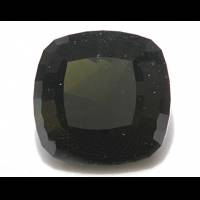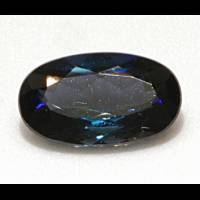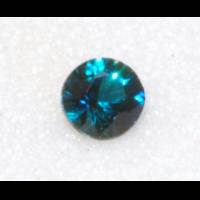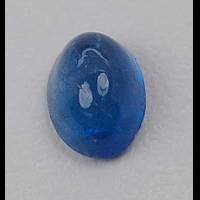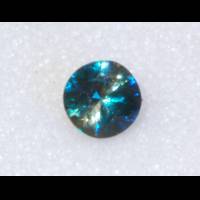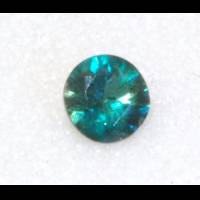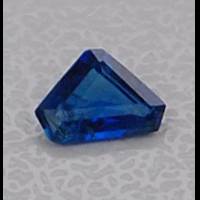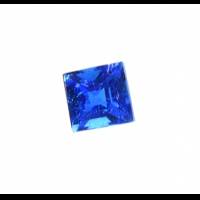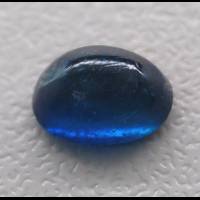Lazulite
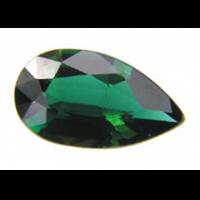
Pakistan
0.75 carats
© irocks.com
Lazulite is sometimes confused with 2 better known and more common minerals: lazurite and azurite. Lazulite frequently appears as euhedral crystals rather than in massive form.
Lazulite Gemstones by Colour
This table shows the variety of hues this gemstone can be found in. Click on a photo for more information.
Lazulite Gemstones by Size
This table shows distribution of Lazulite gemstone sizes that are listed on this site. This can give a good indication as to the general availability of this gemstone in different sizes.
Contributed photos
Lightest:0.07 cts
Heaviest:11.36 cts
Average:1.52 cts
Total photos:13
Do you have a larger Lazulite? Why not upload a photo?
| General Information | ||||||||||||||||||
|---|---|---|---|---|---|---|---|---|---|---|---|---|---|---|---|---|---|---|
| Chemical Formula |
| |||||||||||||||||
| Physical Properties of Lazulite | ||||||||||||||||||
| Mohs Hardness | 5.5, Blue Chart Gem Identification (2010) More from other references | |||||||||||||||||
| Specific Gravity | 3.04 to 3.17, Blue Chart Gem Identification (2010) More from other references | |||||||||||||||||
| Tenacity | Brittle, Gemstones of the world (2001) | |||||||||||||||||
| Cleavage Quality | Indistinct, Gemstones of the world (2001) More from other references | |||||||||||||||||
| Fracture | Uneven,Splintery, Gemstones of the world (2001) More from other references | |||||||||||||||||
| Optical Properties of Lazulite | ||||||||||||||||||
| Refractive Index | 1.604 to 1.646, Blue Chart Gem Identification (2010) More from other references | |||||||||||||||||
| Optical Character | Biaxial/-, Blue Chart Gem Identification (2010) More from other references | |||||||||||||||||
| Birefringence | 0.031 to 0.036, Blue Chart Gem Identification (2010) DoublingMore from other references | |||||||||||||||||
| Pleochroism | Transparent crystals show a strong pleochroism: colorless - light blue - dark (violet) blue, Blue Chart Gem Identification (2010) More from other references | |||||||||||||||||
| Dispersion | 0.014, Gemstones (2009) | |||||||||||||||||
| Colour | ||||||||||||||||||
| Colour (General) | Dark blue to blue-white, green-blue, Gemstones of the world (2001) More from other references | |||||||||||||||||
| Causes of Colour | Blue, Fe2+-O-Fe3+ charge transfer, Pragmatic Spectroscopy For Gemologists (2011) | |||||||||||||||||
| Transparency | Transparent,Translucent,Opaque, Blue Chart Gem Identification (2010) Commonly opaqueMore from other references | |||||||||||||||||
| Lustre | Vitreous, Gemstones (2009) | |||||||||||||||||
| Fluorescence & other light emissions | ||||||||||||||||||
| Fluorescence (General) | None, Gemstones of the world (2001) More from other references | |||||||||||||||||
| Crystallography of Lazulite | ||||||||||||||||||
| Crystal System | Monoclinic, Blue Chart Gem Identification (2010) More from other references | |||||||||||||||||
| Habit | Stubby to acute dipyramidal crystals, Gems, Sixth Edition (2006) More from other references | |||||||||||||||||
| Geological Environment | ||||||||||||||||||
| Where found: | Occurs in granite pegmatites and in quartzites, Gems, Sixth Edition (2006) | |||||||||||||||||
| Further Information | ||||||||||||||||||
| Mineral information: | Lazulite information at mindat.org | |||||||||||||||||
| Significant Gem Localities | ||||||||||||||||||
| ||||||||||||||||||


